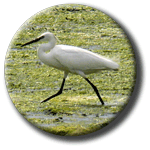SPA
Special Protection Area
T
he EC Directive on the Conservation of Wild Birds (79/409/EEC)
requires member states to safeguard the habitats of migratory birds and certain
particularly threatened birds. Under the Directive, the UK is committed to taking "the requisite measures
to preserve, maintain and re-establish a sufficient diversity and areas of habitat"
for "all species of naturally occurring birds in the wild state".
This includes the designation of SPAs.
Under the Directive, the UK is committed to taking "the requisite measures
to preserve, maintain and re-establish a sufficient diversity and areas of habitat"
for "all species of naturally occurring birds in the wild state".
This includes the designation of SPAs.
This is designed to protect wild birds, and to provide sufficient
diversity of habitats for all species so as to maintain populations at an ecologically
sound level. It lists birds of special conservation concern requiring special
conservation measures, and includes selection of areas most suitable for them
to be designated Special Protection Areas (SPAs). Furthermore it lists birds
for which hunting and sale and other activities are allowed, but otherwise affords
a strong degree of protection to all birds ("reverse listing" formula).
Legal implementation is by three mechanisms. The European Commission can investigate
complaints of breach of the Directive. This Directive had much influence on
the Wildlife and Countryside Act and many of its requirements are included in
that legislation. SPAs, or, more precisely, the birds within SPAs, have a limited
amount of stronger protection than SSSIs, as provided by the Conservation (Natural
Habitats, &c.) Regulations, 1994. Special Areas of Conservation (SACs) share
this protection. SPAs and SACs together form a network of protected sites across
the EU called "Natura 2000".
There are 87 proposed or designated SPAs in England, Wales and
Northern Ireland. All SPA are also SSSIs or ASSIs. There are no known plans
to create SPAs for other groups of species, but SACs effectively provide this
in a slightly different form.

 Under the Directive, the UK is committed to taking "the requisite measures
to preserve, maintain and re-establish a sufficient diversity and areas of habitat"
for "all species of naturally occurring birds in the wild state".
This includes the designation of SPAs.
Under the Directive, the UK is committed to taking "the requisite measures
to preserve, maintain and re-establish a sufficient diversity and areas of habitat"
for "all species of naturally occurring birds in the wild state".
This includes the designation of SPAs.